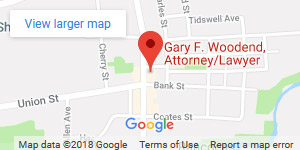Lesson Sixteen — Active Listening
If you show respect for others, you get respect. It’s very simple. One of the best ways to show respect for others is to listen to what they have to say. Make them feel important by listening to what they have to say. Actually, listening to them is not quite enough. They have to feel like you are listening. In fact, you don’t actually have to listen to them. You just have to make them feel like you are listening. Here is how.
When someone is speaking to you, and you are listening, they cannot tell whether or not you are really listening unless you respond to them is some way. Body language is important. Face them. Lean forward. Nod once in a while. Grunt once in a while. These are good things to do, but if you really want them to feel important, you have to be an active listener. This is what this technique is called. Active Listening.
Ask questions. Repeat what they are saying. Rephrase what they are saying, and feed it back to them. Let’s look at some examples.
Bud : I think my dog hates me.
Sam : Hmmm.
Bud : Two weeks ago he buried my pajamas in the back yard.
Sam : Yeah?
Bud : Last week he ate my lunch when I wasn’t looking.
Sam : Wow.
Bud : Then, he wouldn’t go outside to go to the bathroom, so I figured he didn’t have to go.
Sam : Hmmm.
Bud : Then when I got home; he had peed in my bed.
Sam : Yeah?
Bud : When I asked him about it, he just sat there and kept smiling at me.
Sam : Wow. So, how is Sam doing as an active listener? Not so great, but at least he did not say, “What?Did you say something?” or “Are you talking to me?” Actually, active listening is a little bit more involved than Sam’s attempt.Let’s try it again with Debbie.
Bud : I think my dog hates me.
Deb : Is that so? What is his name?
Bud : Bob, and it’s a she.
Deb : A girl dog named Bob, interesting.My apologies, Bud.
Bud : Two weeks ago he buried my pajamas in the back yard.
Deb : Your pajamas? Why did he do that?
Bud : Because he hates me.
Deb : Oh yes, I forgot.
Bud : Last week he ate my lunch when I wasn’t looking.
Deb : And what were you having for lunch, Bud?
Bud : What the ¡¢§*@*! difference does that make?
Deb : I don’t know. I’m just trying to be a good listener.
Bud : Then, he wouldn’t go outside to go to the bathroom, so I figured he didn’t have to go.
Deb : He didn’t have to go, Bob? I mean, Bud? He didn’t have to go, Bud?
Bud : Well, that’s what I thought, but when I got home, he had peed in my bed.
Deb : Peed in your bed? I hate when that happens.
Bud : When I asked him about it, he just sat there and kept smiling at me.
Deb : I see, Bud.Your dog was smiling at you? I’m beginning to see why our dog hates you.

Anyway, you get the general idea. By asking questions and repeating back what they say, mentioning their name once in a while, you give them the impression you are really interested in them, and in what they have to say.
Active listening is often a part of an effective sales presentation. If you look back on the sections where we discussed sales techniques, you will see some similarities. This is because active listening is often used as a sales technique to find out more about your target’s thoughts, and to get your target agreeing with you in preparation for the close. “So, you are saying you like the green one better than the red one?” Or, “So, you don’t want to go to the prom because you don’t like getting dressed up? Do I have that right?”
Active listening is very simple and also very useful. It can be fun and will help in almost any social or business situation. Try it. It can be fun.




